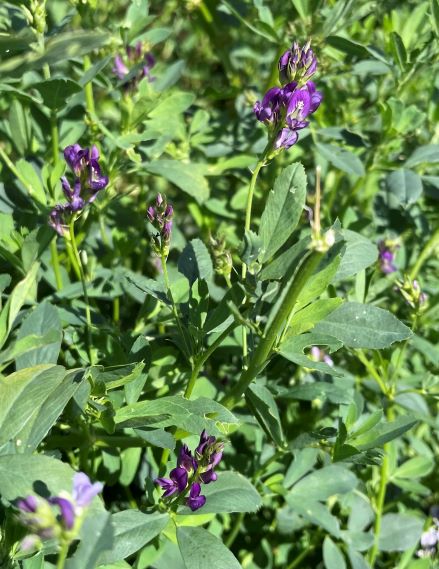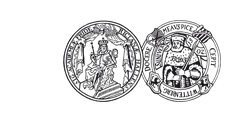
Links
Contact
Leitung/head:
Prof. Dr. habil Janna Macholdt
Professur für Allgemeinen Pflanzenbau und Ökologischen Landbau / Department of Agronomy and Organic Farming
phone: +49 (345) 55 22628
janna.macholdt@landw.uni-ha...
Betty-Heimann-Str. 5
06120 Halle (Saale)
Stellv. Leitung/Deputy head:
Dr. Thomas Chudy
Professur für Landwirtschaftliche Betriebslehre / Agricultural Production Economics and Farm Data Management
phone: +49 (345) 55 22 448
thomas.chudy@landw.uni-hall...
Karl-Freiherr-von-Fritsch-Str. 4
06120 Halle (Saale)
Publications
Promotions
- Josef Hauser: "Development of stable yield forecasts using artificial neural networks for the economic optimization of site-specific nitrogen fertilization in winter wheat" (Agricultural Management)
Short description: Site-specific cultivation generates enormous amounts of data with corresponding utilization potential. The use of data mining in precision agriculture could prove to be a practicable tool. Especially for the planning of site-specific nitrogen fertilizer application, small-scale yield forecasts have been created for years with the help of data mining tools in order to calculate economically optimal nitrogen applications on a site-specific basis.
Bachelor and Master theses
- Antonia Modersohn (2023): "The CO2 footprint of one liter of milk" (Master thesis)
Short description: The topic of the thesis is to determine the CO2 footprint of one liter of milk as produced on the Pfaffendorf farm. The years 2017-2021 are compared with each other. In 2018, the conversion from conventional farming to organic farming in accordance with EU regulations took place and in 2020 production was converted to organic farming. The aim of the work is to determine how the different production conditions and requirements imposed by the labels (use of fertilizers, feed purchase, feeding) affect the carbon balance of the milk. Furthermore, there is the possibility to look at the years 2018 and 2019 as dry years in the region of Central Germany and to see how a reduced feed production on the farm as a result of climatic extremes can affect the carbon footprint.
- Sophie Henninger (2023): "The influence of biostimulants on yield and vitality in alfalfa in organic farming" (Bachelor thesis)
The aim of the trial in 2023, which was set up on practice areas of the Teaching and Experimental Station Görzig, was to use biostimulants to increase the yield of alfalfa and strengthen its vitality, especially under drought stress. The two biostimulants tested were the product "Oceryos III" from the company "TimacAgro" and "BlackHum" from the company "PHYTOsolution. For further information, see "Current research (Field 350)".
- Tim Becker (2024): "Field trial on the use of bacterial nitrogen-fixing biostimulants in organic winter wheat in the Central German dryland" (Bachelor thesis)
This large-scale on-farm trial examines the effectiveness of biostimulants in a winter wheat crop. A fertilizing, growth-promoting effect is achieved by applying nitrogen-fixating bacterial preparations to the wheat leaves. Two commercially available products are compared with an untreated variant in terms of grain yield and grain quality. The trial conditions include the pronounced pre-summer drought combined with fertile, lowland soil, as well as the three-year organic management of the area. It should be noted that no fertilization measures were applied during the trial year.
Scientific publications
- Gross, A., Bromm,T., Polifka, S., Schierhorn, F. (2022): The carbon footprint of milk during the conversion from conventional to organic production on a dairy farm in central Germany. Agron. Sustain. Dev. 42, 37 DOI 10.1007/s13593-022-00775-7
- Pätzold, S., Leenen, M., Frizen, P., Heggemann, T., Wagner, P. und Rodionov, A. (2020): Predicting plant available phosphorus using infrared spectroscopy with consideration for future mobile sensing applications in precision farming. Precision Agriculture, Volume 21(2), Page 1-25. DOI 10.1007/s11119-019-09693-3
- Wagner, P. und Hank, K. (2013): Suitability of aerial and satellite data for calculation of site-specific nitrogen fertilisation compared to ground based sensor data. Precision Agriculture, Volume 14 Issue 2, 2013, Page 135-150. DOI 10.1007/s11119-012-9278-1 ISSN: 1385-2256 (Print) 1573-1618 (Online).
Further publications
- Hauser, J., Maidl, F.X. and Wagner, P. (2021): Investigation of site-specific yield recording of large combine harvesters in winter wheat. GI-Edition, Lecture Notes in Informatics (LNI) - Proceedings, Vol. P-309, Bonn, pp.133-138. ISBN: 978-3-88579-703-6.
- Pietzner, D. and Wagner, P. (2020): Quantifying the maximum goodness of fit of sensor readings. In: Gandorfer, M. et al. (eds.): Computer science in agriculture, forestry and the food industry. Focus: Digitalization for humans, the environment and animals. GI-Edition, Lecture Notes in Informatics (LNI) - Proceedings, Vol. P-299, Bonn, pp.229-234. ISBN: 978-3-88579-693-0.
- S.-O., S. and Wagner, P. (2020): Sub-area specific phosphorus fertilization: Contribution to the improvement of phosphorus efficiency? In: Gandorfer, M. et al. (eds.): Information technology in agriculture, forestry and the food industry. Focus: Digitalization for humans, the environment and animals. GI-Edition, Lecture Notes in Informatics (LNI) - Proceedings, Vol. P-299, Bonn, pp.289-294. ISBN: 978-3-88579-693-0.
- Hauser, J. and Wagner, P. (2018): Improving the use of artificial neural networks for site-specific nitrogen fertilization. In: ISPA (International Society of Precision Agriculture), Proceedings of the 14th International Conference on Precision Agriculture, June 24-27, 2018, Montreal, Canada, p.p.
- Marz, M. and Wagner, P. (2016): Is the grid too big? Bauernzeitung, special issue October 2016, pp.16-19, Berlin. ISSN 2194-2587.Wagner, P. (2012): How N-sensors pay off. In: DLZ 3/2012, p.36-39, Munich. ISSN 0949-4987.




